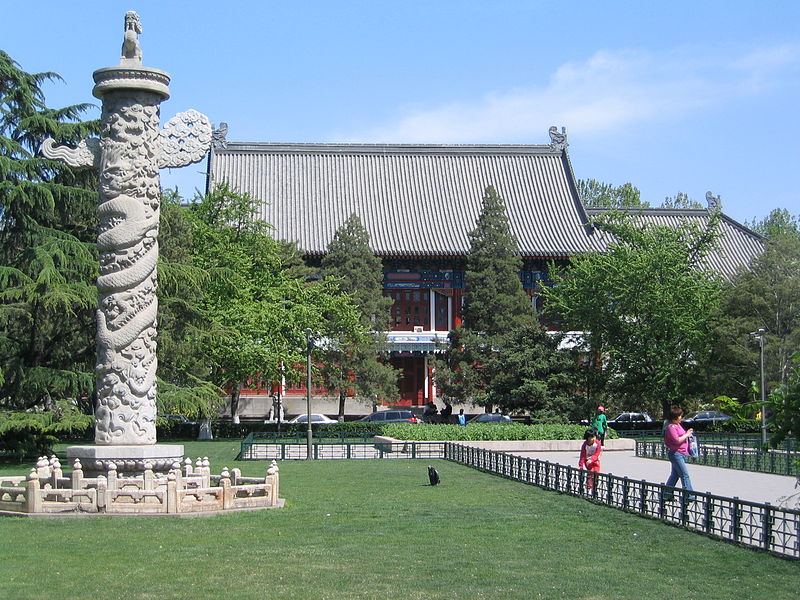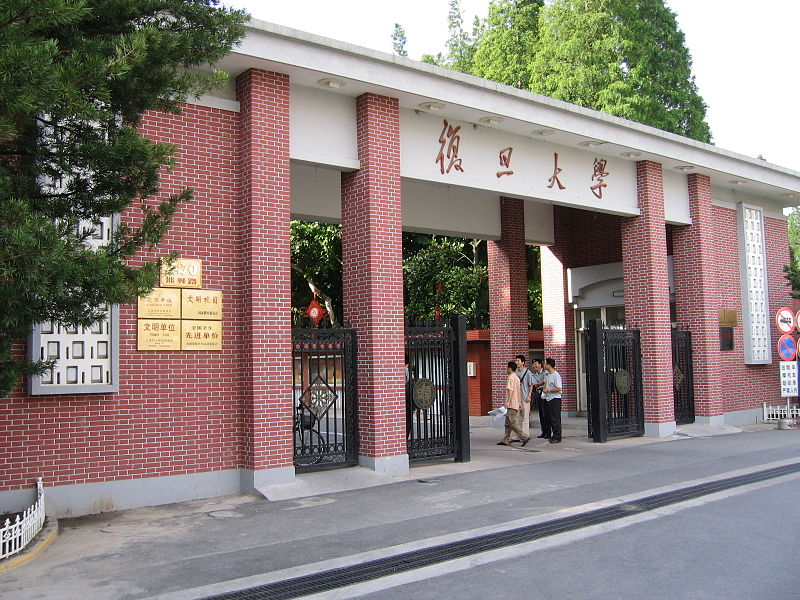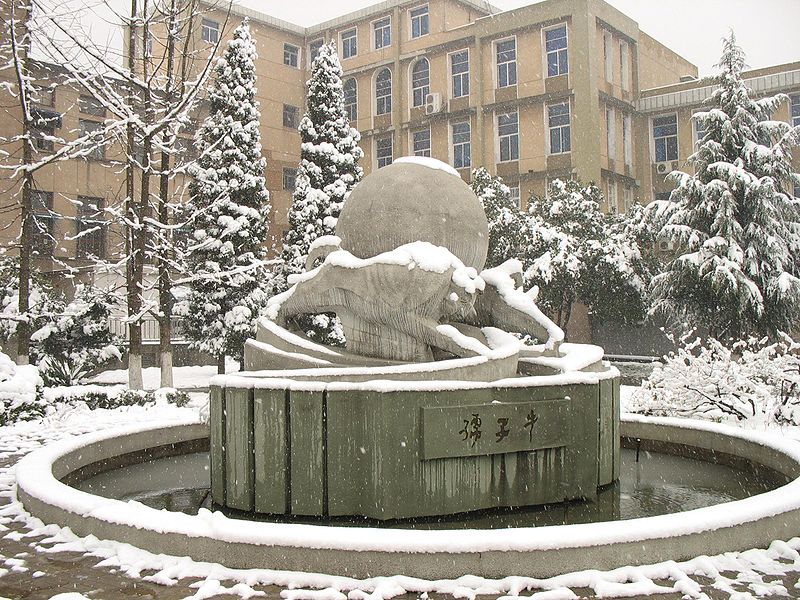**Update: get the latest list of top universities in China here, based on the 2015 edition of the QS University Rankings: BRICS.**
It’s fair to say that universities in China dominate the new QS University Rankings: BRICS, a ranking of the top 100 universities in the five BRICS countries, developed by QS in collaboration with Russian news agency Interfax.
In the new ranking, 40 of the top 100 places are taken by universities in China, including seven of the top 10 spots and almost half of the top 50. The very top two places go to the prestigious Tsinghua University and Peking University, both of which rank within the global top 50 in the latest QS World University Rankings®.
Developed to highlight top-performing institutions in the BRICS countries and facilitate comparison of the BRICS higher education systems, the QS University Rankings: BRICS uses eight indicators to assess and compare universities. In general, the top universities in China score well across the board – but there is significant variation in the combinations of strengths at each.
Here’s a closer look at the 10 top universities in China, based on the QS University Rankings: BRICS.
1. Tsinghua University
Topping the first QS University Rankings: BRICS is the prestigious Tsinghua University, based in Chinese capital Beijing, which ranks 48th in the world in the 2013/14 QS World University Rankings. It’s rated top among BRICS universities by graduate employers and second by academics, and has China’s strongest score for faculty-student ratio. It’s within the BRICS top 10 for international faculty, top 20 for international students and just outside the top 20 for research papers per faculty member. A relatively weak point is percentage of staff with a PhD – most of the other top universities in China listed here (except for Xi'an Jiaotong University) score better on this indicator.
 2. Peking University
2. Peking University
Fellow Beijing-based institution Peking University comes out just behind Tsinghua in the first edition of the QS University Rankings: BRICS. In the latest QS World University Rankings, it’s actually two places above; the two are very closely matched. Whereas Tsinghua is rated first among the BRICS institutions by employers and second by academics, Peking comes top with academics and second with employers. Tsinghua has slightly more favorable scores for faculty-student ratio, research papers per faculty and international students, while Peking is slightly stronger for percentage of staff with a PhD, research citations per paper and international students. About as close as it gets!
 3. Fudan University
3. Fudan University
China’s third entry in the BRICS ranking, Fudan University is fourth in the ranking overall, beaten by Russia’s Lomonosov Moscow State University. Located in Shanghai, China’s largest city by population and among the largest urban areas in the world, Fudan is ranked third in the BRICS group by employers and fourth by academics, and boasts China’s strongest score for research citations per paper (6th in the BRICS ranking), indicative of its success in producing research with a strong influence within the academic community. Faculty-student ratio is its main weak point, while the internationalization indicators suggest that success in attracting international students has not quite been matched by international faculty in the same high numbers.
 4. Nanjing University
4. Nanjing University
Fifth overall in the QS University Rankings: BRICS, Nanjing University is based in the city from which it takes its name, in eastern China, north of Shanghai, which is currently preparing to host the 2014 Summer Youth Olympics. Among the top universities in China, Nanjing University boasts the highest percentage of academic staff members with a PhD, though unfortunately this is not matched by an equally high faculty-student ratio. Given its highly qualified staff, the university unsurprisingly scores well for research papers per faculty member and citations per paper, as well as having a strong rating for the international diversity of its faculty.
 5= University of Science and Technology of China
5= University of Science and Technology of China
In the QS University Rankings: BRICS, the University of Science and Technology of China is ranked 6=, joint with fellow Chinese institution Shanghai Jiao Tong University. Now based in the city of Hefei, it was originally founded in Beijing by the Chinese Academy of Sciences. With a strong focus on research in science and technology disciplines, it gets its strongest scores for research productivity and impact – ranked 7th among BRICS universities for papers per faculty member, and 8th for citations per paper. Its weakest score is for international students – though it’s been more successful at attracting overseas academics.
5= Shanghai Jiao Tong University
Level-pegging with the University of Science and Technology is Shanghai Jiao Tong University, one of China’s oldest and most internationally reputed universities. As its name suggests, it’s based in Shanghai, and has a strong focus on postgraduate studies, with graduate enrolments exceeding undergraduates. It’s rated 4th among BRICS universities by employers and 6th by academics, and boasts the BRICS group’s second highest score for research papers per faculty member (beaten only by fellow Chinese institution Zhejiang University). Like many of the top universities in China, its weakest point is faculty-student ratio.
 7. Zhejiang University
7. Zhejiang University
Placed 9th in the QS University Rankings: BRICS, Zhejiang University is another of the oldest universities in China, located in the city of Hangzhou. It claims the highest rate of research papers published per faculty member of any of the top BRICS universities, though a weaker score for citations per paper suggests this productivity has not yet fully converted into an equally high level of influence. It does, however, have a very strong reputation among both academics and graduate employers, and its only real weak point in the indicators used to compile the ranking is for faculty-student ratio – a shortcoming shared by many other top universities in China.
8. Beijing Normal University
The third Beijing-based institution to appear, Beijing Normal University places 12th in the BRICS ranking. While it is a public research university, it’s one of just two of the 10 top universities in China listed here not included in the elite C9 group, which enjoys high levels of government research funding. It is, however, part of Project 211, another initiative focused on raising research standards. It scores especially well for percentages of international faculty and staff with a PhD (of the top universities in China, only Nanjing University is stronger on this indicator).
9. Sun Yat-sen University
The second non-C9 institution to be rank among the 10 top universities in China, Sun Yat-sen University is in the city of Guangzhou, in the south-east of the country. Like all the universities listed here, it’s part of Project 985 – basically an extension of the C9 initiative, under which high levels of research funding have now been granted to 39 universities. Sun Yat-sen University ranks 20th overall in the QS University Rankings: BRICS, getting its strongest scores for research citations per paper (19th), academic reputation (21st) and international faculty (32nd).
10. Xi'an Jiaotong University
Finally, Xi'an Jiaotong University, ranked one place behind Sun Yat-sen University in the BRICS ranking at 21st, is located in the historically rich and fast-growing city of Xi'an, known as one of China’s four great ancient capitals, and identified as one of the country’s emerging ‘megacities’. Getting respectable scores across all eight indicators, Xi'an Jiaotong University claims its strongest score for employer reputation (19th), while its weakest point is percentage of staff with a PhD. Compared to other top universities in China, it ranks relatively well for faculty-student ratio – among the 10 listed here, only Tsinghua and Peking do better on this indicator.
Another 30 universities in China are ranked among the top 100 BRICS universities.









